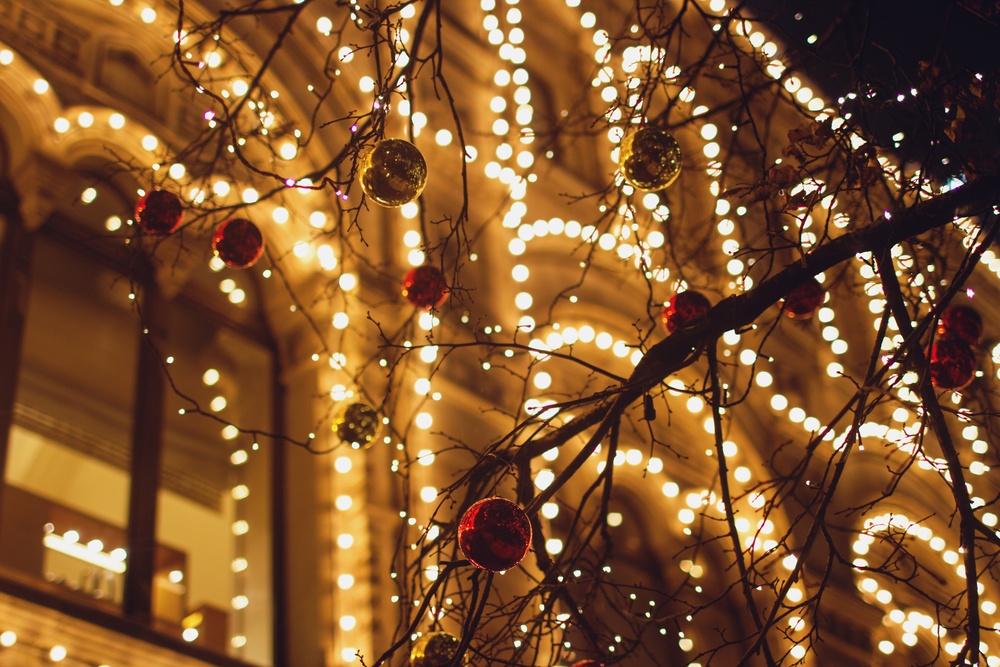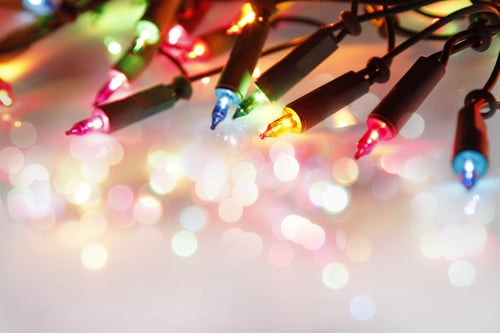How Much Electricity Do Christmas Lights Use?

Christmas lights are a basic element of decoration during this time of the year, and many building owners make a serious effort to impress their neighborhood with colored lighting. However, property owners are often afraid of getting a larger electricity bill after the holiday season, due to the extra lighting power. This is especially true in northeast states like New York and New Jersey, where the kilowatt-hour price is well above the national average.
Since Christmas lighting is a temporary electrical installation, the same recommendations given by electrical engineers for permanent lighting systems apply here:
- Make sure the installation is safe, minimizing the risk of electric shock or fire.
- Consider energy efficiency, especially if you live in a state with expensive electricity.
- Wire capacity must be taken into account: Connecting too many light sets together can melt insulation and cause an electrical fault.
LED Christmas lights are much more efficient than traditional incandescent lights, while being safer and having a much longer service life. LED lighting has many promising applications, and this includes Christmas decoration.
Upgrade your building with energy efficient lighting.
Advantages of LED Lighting in Christmas Decoration
We have discussed the benefits of LED lighting in previous articles, and some of them also apply for Christmas lighting. For example, consider that LED bulbs produce much less heat than older lamp types, which makes them safer for occupants: the risk of burns from accidental contact with the bulbs is eliminated, and they are also less likely to start a fire.
The energy savings of LED lighting in conventional applications also apply for Christmas decoration. LED lights achieve electricity savings of over 80% compared with incandescent bulbs, and even higher savings are possible with lighting automation.
LED products also offer a unique advantage for Christmas lighting: since each light set draws a much lower current, more of them can be connected together without overloading the wires. For comparison, incandescent Christmas lights draw 5 to 6 times more current - when many of them are connected, the first light set in the string can easily burn from excessive current. Many fire incidents during the Christmas season are caused by careless use of light sets.
Comparing Incandescent and LED Christmas Light Sets

As you might expect, LED Christmas lights have a higher upfront cost than their incandescent counterparts. For example, you can expect to pay between $20 and $40 for a 300-light LED set, while a 300-light incandescent set can be purchased for less than $10. However, the power consumption of these 300 incandescent lights is around 72 watts, while the LED bulbs consume around 15 watts.
Assuming 1,000 hours of use during a Christmas season, and an electricity cost of 20 cents/kWh, the operating cost of each light set would be the following:
- Operating cost of 300 incandescent lights (72W) = $14.40
- Operating cost of 300 LED lights (15 W) = $3.00
- Savings = $14.40 - $3.00 = $11.40
Although the electricity savings of $11.40 may seem small, consider that these are only the savings of one 300-light set. For example, if a home uses 10 of them, the electricity cost difference between incandescent and LED lighting is $114 for the entire Christmas season. Keep in mind that power consumption may change depending on the manufacturer, and the hours of operation also change depending on user habits. However, this example gives a general idea of the savings you can expect with LED Christmas lights.
Also consider that 1,000 hours of use represent the complete service life of incandescent bulbs, while some LED Christmas lights are rated for up to 20,000 hours. In other words, LED lights are useful for many Christmas seasons without needing replacements.
LED Christmas Lights Allow More Creativity
In addition to their performance benefits, LED Christmas lights offer decorative advantages. Unlike older lamp types, which have a fixed color, LEDs can be manufactured with an adjustable color output.
- This feature is normally used for indoor spaces where multiple activities are carried out, setting the most suitable lighting color for each task.
- However, in the case of Christmas lighting, adjustable color LEDs can be used creatively.
Since LEDs are compact, they also have a manufacturing flexibility that is not possible with older lamp types. A wider variety of Christmas lighting products is available since LED lighting became commercial, since individual LED chips can be arranged in almost any shape. On the other hand, incandescent lights are larger and their heat output limits applications.
Note that Christmas lighting went directly from incandescent to LED. Fluorescent lamps have limited applications in Christmas decoration, for two main reasons: They are susceptible to cold temperatures, and their slow response is unsuitable for blinking patterns. On the other hand, LED lamps have a fast response and suffer little degradation with frequent switching, which makes them ideal for blinking patterns.

Michael Tobias
Michael Tobias, the Founding Principal of NY Engineers, currently leads a team of 50+ MEP/FP engineers and has led over 1,000 projects in the US
Join 15,000+ Fellow Architects and Contractors
Get expert engineering tips straight to your inbox. Subscribe to the NY Engineers Blog below.



